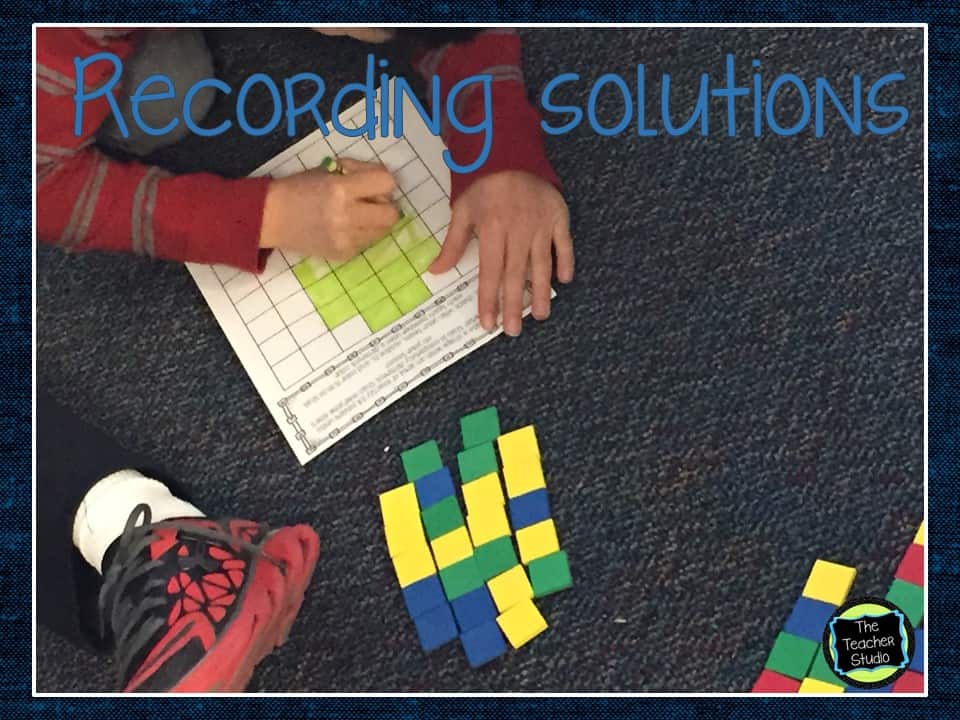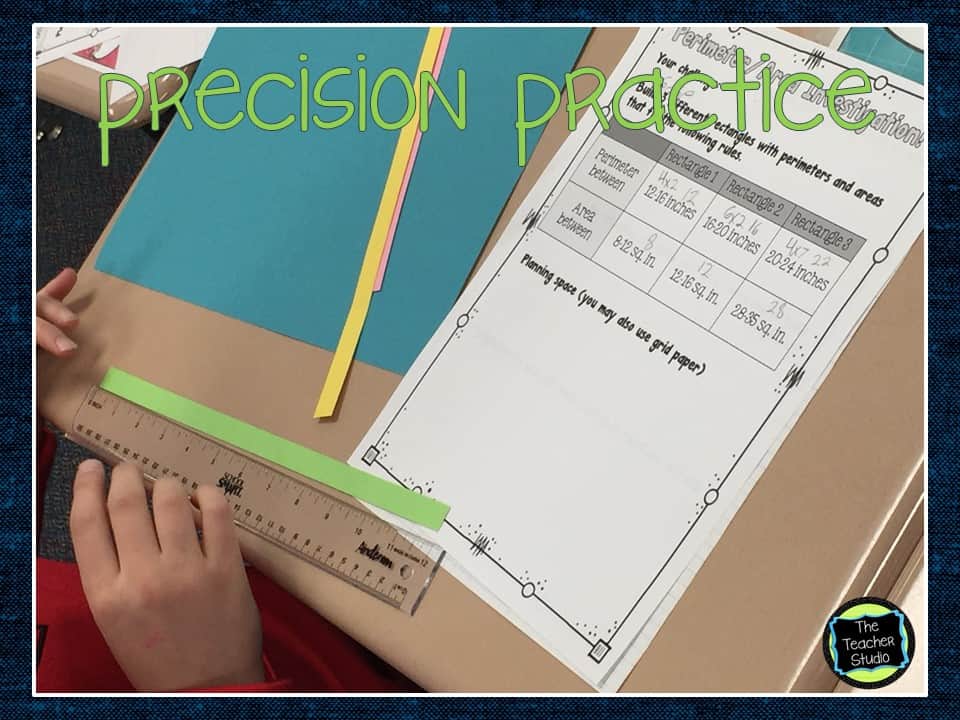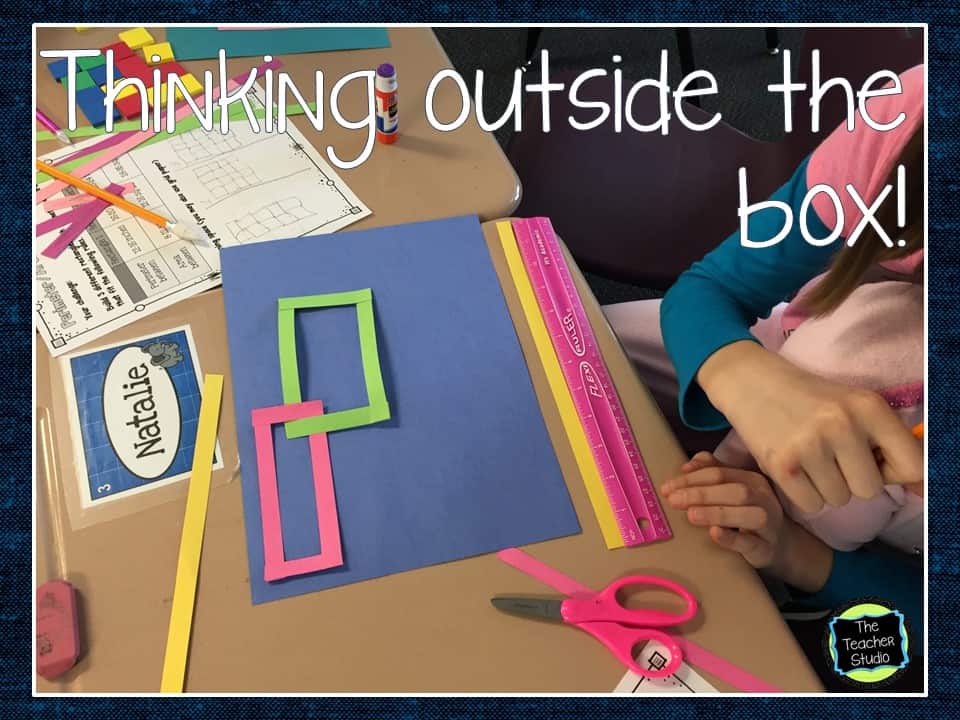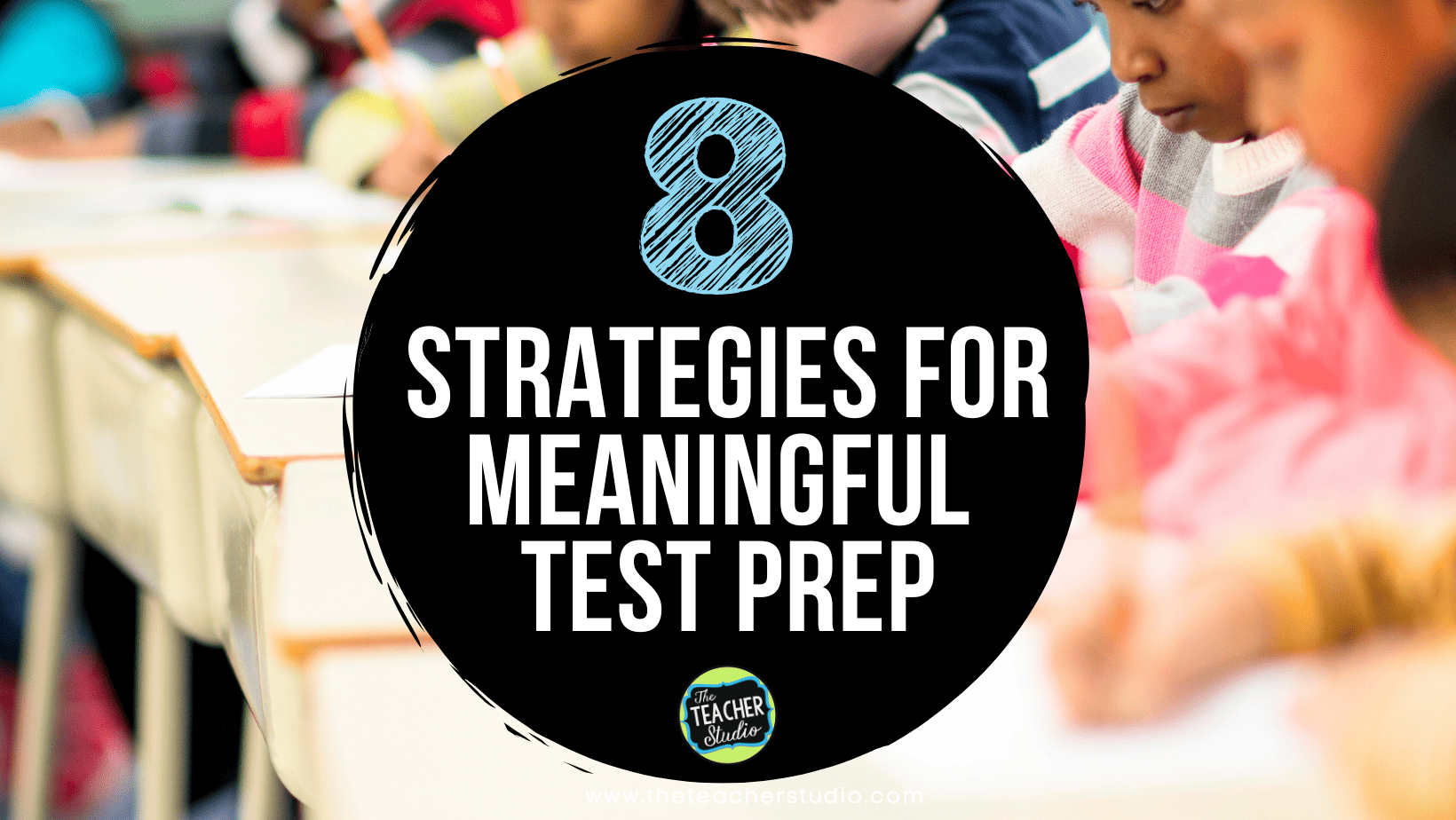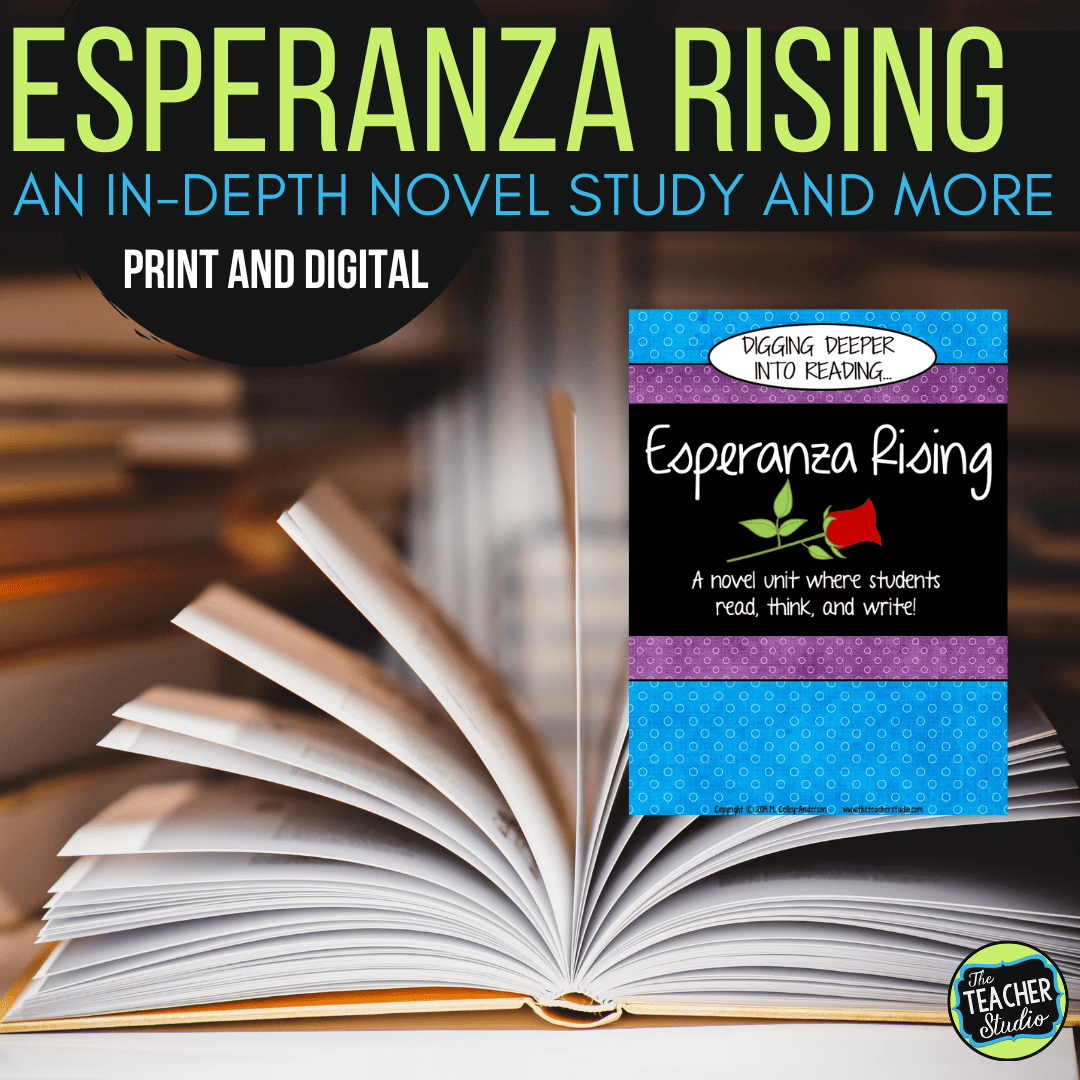One thing I know for sure is that students often need to see/”do” math in ways that aren’t presented in a traditional text book. Students also don’t always learn math in a nice neat sequence–or in one or two lessons as allocated by a yearly plan or scope and sequence. When we try to fit our students learning into OUR convenience, we start to run into trouble–with deep understanding, with attitudes about math, and with our own frustrations that they “just aren’t learning it”!
Whenever I can, I try to immerse my students in a concept over time and in a variety of ways. I want them to “do” the math and develop or construct their own understanding so when they GET to a fill in the blank, they actually understand what goes on the blank and why.
Area and perimeter studies are a perfect example of this. We can teach them to “add up the sides” or tell them “All you have to do is multiply the base and height.” But is it enough?
Over the years I have worked to create some different “experiences” that I think can help students really learn the concepts of area and perimeter. I spend some time with these activities before we tackle the material in our math series–and guess what happens when we do it? That’s right–we complete it in about half the time because it feel so easy for them…
I know the push in schools is to ‘increase rigor” and to cut out art and projects and the tasks that some teachers and administrators might see as “fluff”. Are there plenty of activities out there like that? Yes. But I also challenge people to look closely at activities. Just because something involves construction paper doesn’t make it fluff. Just because it uses a textbook doesn’t make it good. Just because it claims to be “Fully Aligned to the Common Core” doesn’t guarantee quality.
So…I thought I’d share some of the things we did to set the stage for our area and perimeter unit over the last few days!
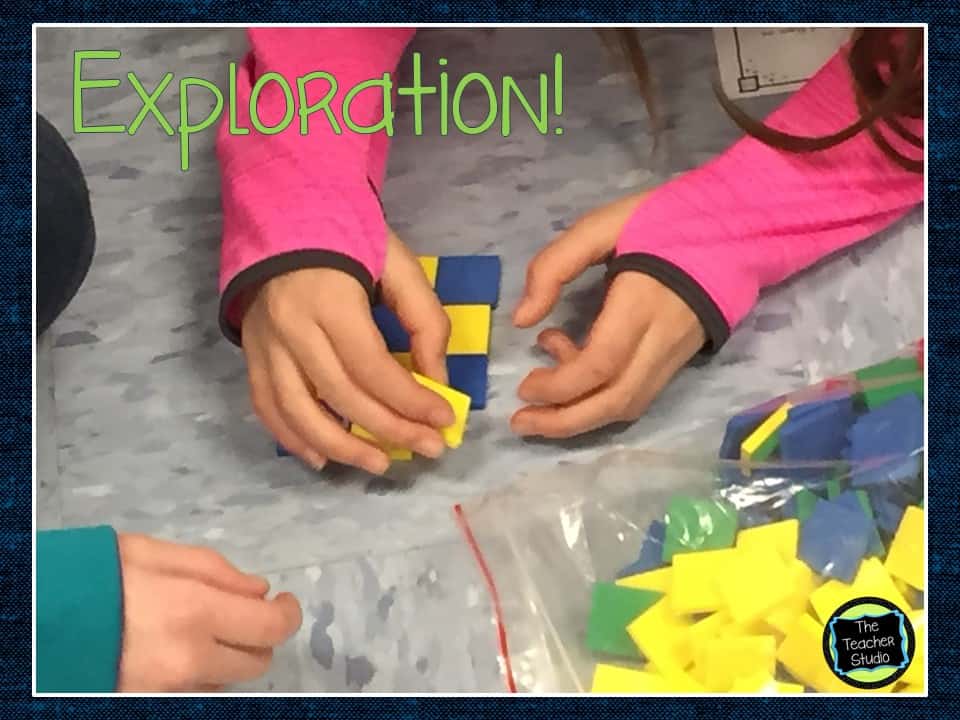 |
| We had to review what a rectangle was…and even how we begin talking about “insides” and “outsides” of shapes. |
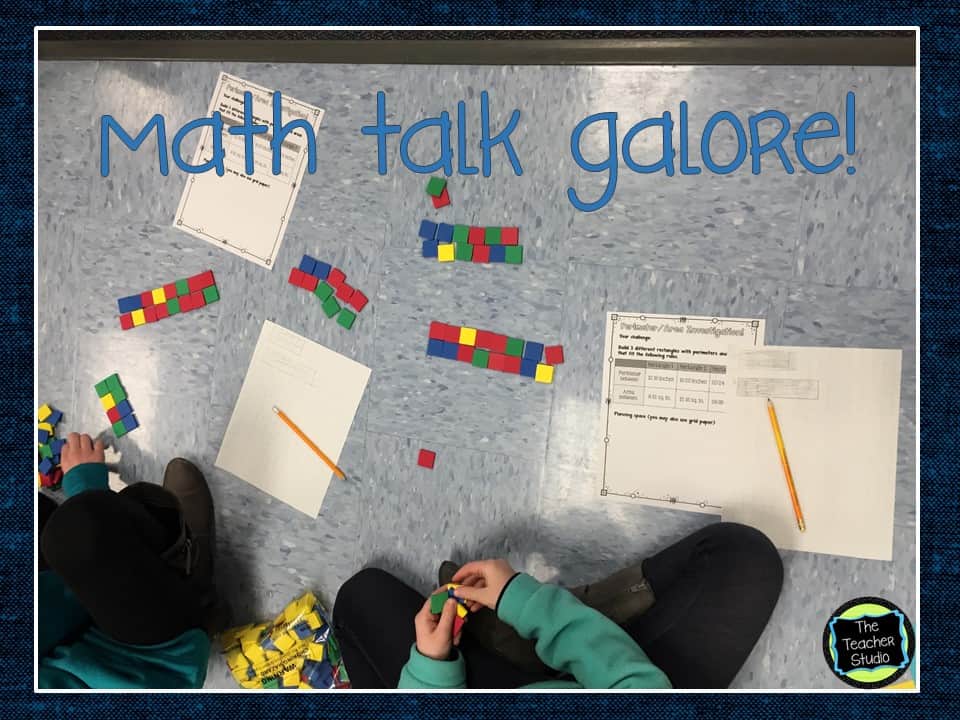 |
| Eavesdropping on students working is my favorite! These two were really trying to come up with a “Trick” or a rule that would help them solve the final rectangle. |
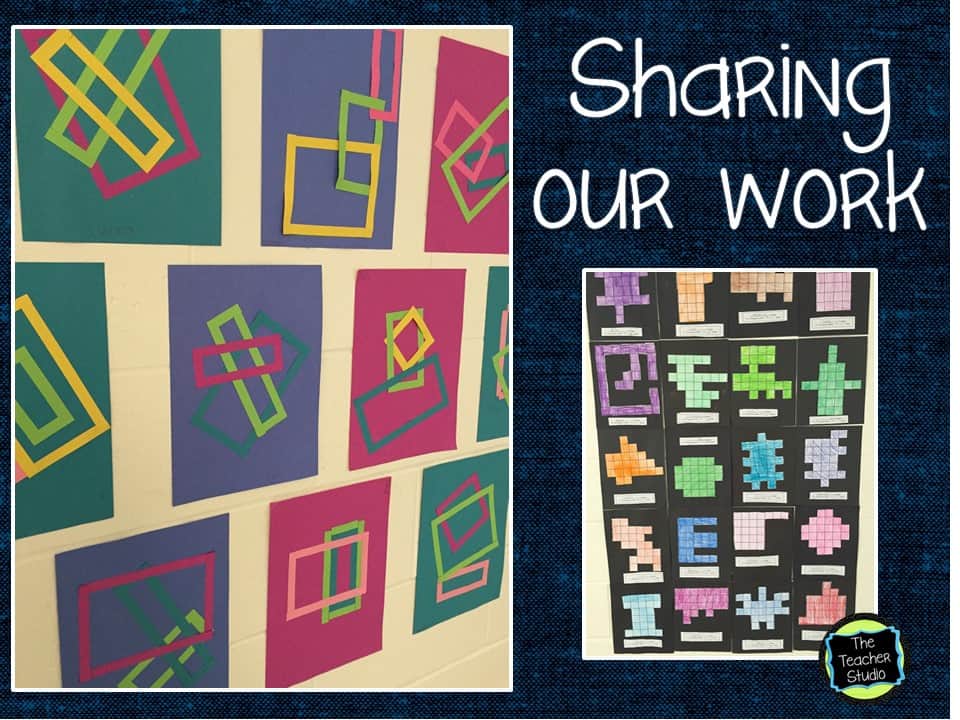 |
| We use an area in the hallway to hang up some of our explorations. The students love seeing all the different ways their classmates tackled the problems! |
There are still a few more challenges we are going to do this week as a part of math workshop, but now we are digging into the work in the textbook as well. I am pretty sure they will have no trouble with it now! I have had requests for these projects to be put all together, so I have worked to do that. I’ve even thrown in a few extra practice activities that are a little higher level than what textbooks often offer. Hope you like it!


